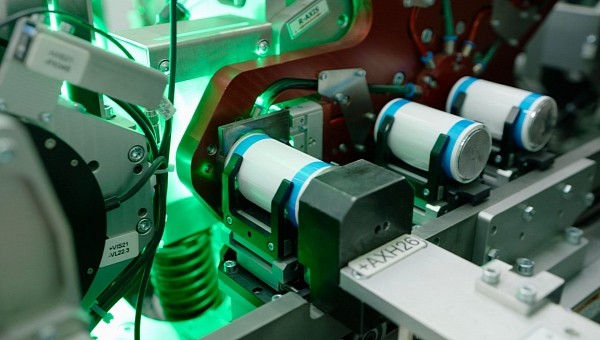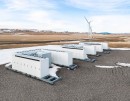Tesla introduced the 4680 battery form factor in 2020 during Battey Day and has struggled to produce it in meaningful numbers since then. Nevertheless, with the new production facility at its gigafactory in Nevada, Tesla wants to change that and announces that the 4680 batteries will power everything, from cars to stationary storage like the Megapacks.
It’s needless to point out that electric vehicles are mostly battery packs on wheels. Since batteries are expensive, this reflects on the price of the car. As the biggest EV maker in the world, Tesla is looking to improve the cost structure of its vehicles while also making batteries store more energy, last longer, and become cheaper. The 4680 form factor was meant to do just that, although that was not their only purpose. Part of their mission was to make Tesla the king of batteries, basically dictating the standard and making other battery manufacturers choose sides.
This has plaid out exactly as planned, for the most part. The part that didn’t work out was yields. Tesla still cannot produce the 4680 cells in high volume. Although the bigger cylindrical batteries look like any other, they differ a lot. Tesla wants to use a dry-electrode process, drastically reducing manufacturing costs. Mastering the process is not easy, and no battery manufacturer has managed to do it. Currently, the 4680 cell production uses a wet electrode process, which involves more steps, meaning Tesla reaps few benefits from transitioning to the new form factor.
But that is set to change with the new battery production facility at Giga Nevada. Currently, Tesla only produces enough 4680 cells for 1,000 battery packs per week, but the new 100-GWh battery line is set to multiply this by 30. Nevertheless, Musk announced during the Q4 2022 earnings call that Tesla’s goal is to increase the total battery capacity to 1,000 GWh and beyond because it has big plans with the 4680 cells.
“Our long-term goal is to get to well in excess of 1,000 gigawatt-hours of cells produced internally and continue to use other cell providers,” Musk said in reply to an investor’s question. “So, to be clear, we will continue to use other cell providers, just that the demand for lithium-ion batteries is quasi-infinite and will be for quite some time. So we feel we can scale a lot faster using both suppliers and internally produced cells. And we’ve got an amazing plan for making the 4680 cell low-cost and high-energy density.”
The last sentence, together with the information that Tesla will use the 4680 cells in its energy storage products like the Megapacks and possibly Powerwall too, might indicate a chemistry diversification. Indeed, LFP batteries are best suited for energy storage, whereas NMC cells are more energy dense but also less stable and durable. Tesla already moved Megapacks on LFP batteries in 2021, so it makes sense to continue using the same chemistry, even with the transition to 4680 cells.
This is all but guaranteed, considering not only their properties but also their more favorable cost structure. Cylindrical LFP batteries are the cheapest to manufacture and offer the longest lifecycle. Musk sees energy storage demand skyrocketing, and he expects the Megapack business to outgrow vehicle production in the future.
Speaking about the 4680 cells for vehicle production, Musk confirmed that all future vehicles, including the Cybertruck and the mass-market model Tesla is working on, will use the new form factor. Tesla prepares four production lines at Giga Texas. One is already producing batteries, while the remaining three are in the commissioning and installation stages.
“Probably our 2023 goal as a 4680 team is to deliver a cost-effective ramp of 4680s well ahead of Cybertruck,” said Musk. “Focus areas are dialing in and improving the quality of the high volume supplied mechanical parts and driving factory process yields up as much as possible. Between the two of those things, if we achieve those key goals, we’ll be well set up for a major 4680 year in 2024.”
This has plaid out exactly as planned, for the most part. The part that didn’t work out was yields. Tesla still cannot produce the 4680 cells in high volume. Although the bigger cylindrical batteries look like any other, they differ a lot. Tesla wants to use a dry-electrode process, drastically reducing manufacturing costs. Mastering the process is not easy, and no battery manufacturer has managed to do it. Currently, the 4680 cell production uses a wet electrode process, which involves more steps, meaning Tesla reaps few benefits from transitioning to the new form factor.
But that is set to change with the new battery production facility at Giga Nevada. Currently, Tesla only produces enough 4680 cells for 1,000 battery packs per week, but the new 100-GWh battery line is set to multiply this by 30. Nevertheless, Musk announced during the Q4 2022 earnings call that Tesla’s goal is to increase the total battery capacity to 1,000 GWh and beyond because it has big plans with the 4680 cells.
“Our long-term goal is to get to well in excess of 1,000 gigawatt-hours of cells produced internally and continue to use other cell providers,” Musk said in reply to an investor’s question. “So, to be clear, we will continue to use other cell providers, just that the demand for lithium-ion batteries is quasi-infinite and will be for quite some time. So we feel we can scale a lot faster using both suppliers and internally produced cells. And we’ve got an amazing plan for making the 4680 cell low-cost and high-energy density.”
The last sentence, together with the information that Tesla will use the 4680 cells in its energy storage products like the Megapacks and possibly Powerwall too, might indicate a chemistry diversification. Indeed, LFP batteries are best suited for energy storage, whereas NMC cells are more energy dense but also less stable and durable. Tesla already moved Megapacks on LFP batteries in 2021, so it makes sense to continue using the same chemistry, even with the transition to 4680 cells.
This is all but guaranteed, considering not only their properties but also their more favorable cost structure. Cylindrical LFP batteries are the cheapest to manufacture and offer the longest lifecycle. Musk sees energy storage demand skyrocketing, and he expects the Megapack business to outgrow vehicle production in the future.
Speaking about the 4680 cells for vehicle production, Musk confirmed that all future vehicles, including the Cybertruck and the mass-market model Tesla is working on, will use the new form factor. Tesla prepares four production lines at Giga Texas. One is already producing batteries, while the remaining three are in the commissioning and installation stages.
“Probably our 2023 goal as a 4680 team is to deliver a cost-effective ramp of 4680s well ahead of Cybertruck,” said Musk. “Focus areas are dialing in and improving the quality of the high volume supplied mechanical parts and driving factory process yields up as much as possible. Between the two of those things, if we achieve those key goals, we’ll be well set up for a major 4680 year in 2024.”
FYI: Cylindrical LFP is the cheapest cell to produce with the highest cycle life.
— The Limiting Factor (@LimitingThe) January 25, 2023
Energy storage is all about dollars per kWh per cycle.
So yeah, I think 4680 will eventually use LFP.
But, I'm not wedded to that. No need to get tribalistic about your can shape, lol. pic.twitter.com/iCsF1VLP5f






